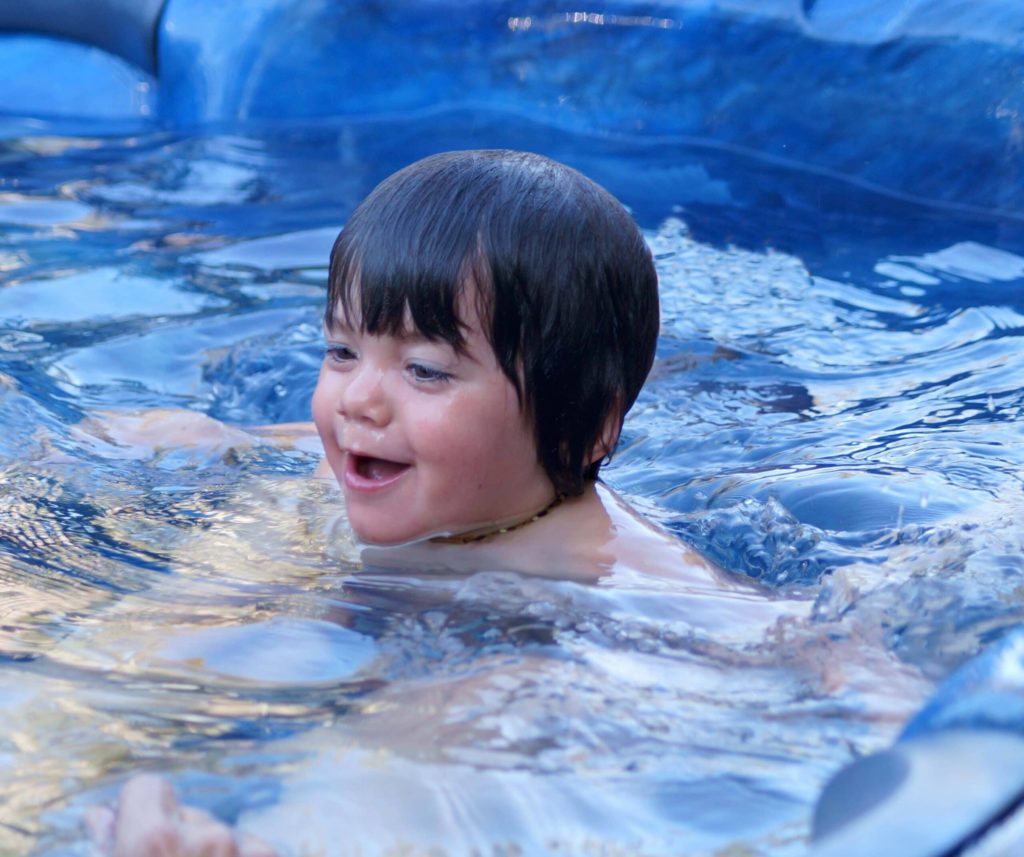“I am not happy with how my child is progressing because at her last swim school she was swimming across the pool” is a statement I have heard lots of times over the many decades I have been teaching swimming and running Shapland Swim Schools. I also knew the statement “she was swimming across the pool” to be untrue as I was teaching that pupil and knew that the pupil could not float on top of the water by himself or herself without being frightened.
The Role of Floatation Devices and the risks
So what caused the parent to make such a statement? The answer is simple. The child has been having swimming progress lessons where kickboards, noodles or other floatation devices have been used since the beginning of the process.
Now please don’t misconstrue my last statement to mean there is no place for kickboards, noodles, paddles and other devices and aids in teaching a child how to swim. What I am saying is the introduction of such devices into the program should be after the child is totally confident the water will always hold them up, in other words the pupil can float, perfectly still and relaxed, on top of the water face down for a slow count to five.
If you introduce floatation devices prior to this point in a child’s development they think the floatation device is holding them up not the water and tend to rely of that device as they develop some of the other skills necessary in learning how to swim e.g. moving their arms one at a time while still holding a kick board, kicking along holding on to a noodle or having a noodle placed under their arms and encouraged to “paddle” with their hands and kick their feet. By using this swimming process it slows down the skill development of the child because at some stage they need to be able to perform these Aquatic Skill without any aids and the more they rely on these aids the harder it is and the longer it takes to perform the basic skills without such devices.
Read more: When to Start and Stop Swimming Lessons for Your Child
The Misconception of Swimming
So lets go back to the opening statement by an unhappy parent. Of course the child appears to be able to “swim” however the parents definition of swimming progress is flawed because being able to swim means “you are able to hold the water with your hands and feet with sufficient skill to not only be able to move through the water but also be able to lift or turn your mouth out of the water at any time to take a breath WITHOUT ANY AIDS.”
Since 1938 Shapland’s have been teaching children and adults to swim and we understand very clearly that the first and most important step in the learn to swim process is for the child/adult to know without a shadow of a doubt the WATER WILL ALWAYS HOLD THEM UP free of any floatation devices. Once a child or adult realizes this fact then they need to learn how to move through the water using their hands a feet and this is when floatation devices can be introduced to the program of baby swimming lessons and swimming classes for all ages.
So what the unhappy parent was seeing I call “Window dressing” which simply means the child appears to be swimming across the pool however they are using a floatation device or the teacher is holding them lightly around the waist and to the untrained it does appear their child is swimming however take the floatation device away and the child/adult becomes tense and afraid.
What Is “Window Dressing”?
So please be aware of the window dressing and look to the core skill your child should be learning which is, if the take a big breath, put their face in the water, and lift their feet off the bottom of the pool, they will not sink. In other words your child knows the water will always hold them up and they do not need and “window dressing i.e. floatation devices or grips by the teacher” for them to stay on top of the water.
Once a child/adult realizes this will always happen then you can use floatation devices to help accelerate skills such as kicking, slowing down arm actions, teaching Breastroke arm action and how to take a breath, because the floatation device then gives the pupil that bit of extra support so they can get a breath. As a result the pupil can then perform a skill for longer periods of time e.g. kicking across the pool with a kick board and not having to stop when they need a breath because they can push down on the kick board to help get their mouth out of the water.
Read more: How to Best Support Your Baby in Their Learn to Swim Journey
Teaching Personal Aquatic Survival Skills
I realize it can be frustrating for a parent to think their child can swim when the reality of the situation is their child has not been taught the water will always hold them up first before floatation device were introduced to the program. When you are in the water with a child teaching them their Personal Aquatic Survival Skills you know whether they are relaxed or tense. Once a child/adult realizes the water always holds them up then they relax and you are then able to teach them how to hold the water with their hands and feet so they can lift/turn their mouth out of the water whenever they need a breath without the window dressing of floatation devices or teachers grips.
Chris Shapland.

